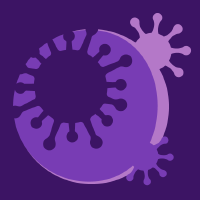Topic Menu
► Topic MenuTopic Editors


Broad-Spectrum Antiviral Agents
Topic Information
Dear Colleagues,
The global outbreak of COVID-19 is a great threat to humans. There is an urgent need for antiviral therapeutics against SARS-CoV2. A strategy to discover effective antiviral drugs consists of screening existing broad-spectrum antiviral agents for activity against SARS-CoV2. In addition to COVID-19, many other epidemic viral diseases, such as influenza, dengue fever, infections by Zika and Ebola viruses, and western/eastern equine encephalitis, cannot yet be successfully treated.
Developing broad-spectrum antiviral agents to treat epidemic diseases caused by emerging and re-emerging viruses is a priority. To this end, the main approaches are based on targeting viral infectivity and modulating host-defense systems. The antiviral mechanisms of broad-spectrum antiviral candidates should be deeply analyzed in the context of different types of viral diseases. This Special Issue aims to collect studies on broad-spectrum antiviral agents, including existing agents repositioning, herbal components, synthesized compounds, and genetically engineered molecules.
Broad-spectrum antiviral agents hold great potential for controlling viral epidemics in the future.
Prof. Dr. Cheng-Wen Lin
Dr. Szu-Hao Kung
Topic Editors
Keywords
- broad-spectrum antiviral agents, BSAA
- host defense
- viral resistance
- small-molecule antiviral
- antiviral analog
- antiviral compounds
- drug repurposing
- antiviral drug development
Participating Journals
| Journal Name | Impact Factor | CiteScore | Launched Year | First Decision (median) | APC |
|---|---|---|---|---|---|

Viruses
|
4.7 | 7.1 | 2009 | 13.8 Days | CHF 2600 |

Biomedicines
|
4.7 | 3.7 | 2013 | 15.4 Days | CHF 2600 |

Pharmaceuticals
|
4.6 | 4.7 | 2004 | 14.6 Days | CHF 2900 |

Pharmaceutics
|
5.4 | 6.9 | 2009 | 14.2 Days | CHF 2900 |

COVID
|
- | - | 2021 | 16.8 Days | CHF 1000 |

MDPI Topics is cooperating with Preprints.org and has built a direct connection between MDPI journals and Preprints.org. Authors are encouraged to enjoy the benefits by posting a preprint at Preprints.org prior to publication:
- Immediately share your ideas ahead of publication and establish your research priority;
- Protect your idea from being stolen with this time-stamped preprint article;
- Enhance the exposure and impact of your research;
- Receive feedback from your peers in advance;
- Have it indexed in Web of Science (Preprint Citation Index), Google Scholar, Crossref, SHARE, PrePubMed, Scilit and Europe PMC.

